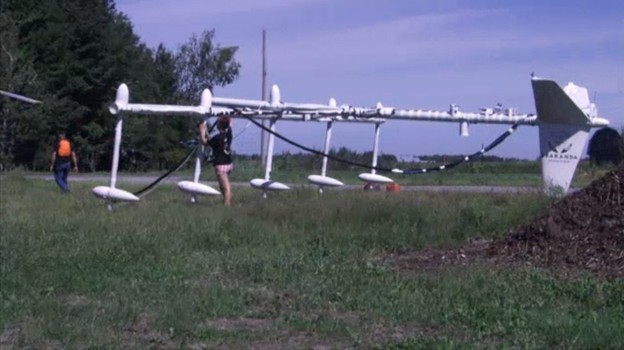How GEM’s Sensors Help Detect Underwater Bombs
GEM Systems produces magnetometers for a variety of applications – even for scouring out still-dangerous bombs hidden underwater.
Our technology has been strapped to a rig dangled some 30 metres underneath a helicopter as it is sent flying out over the water. The lowest part of the rig, which contains GEM’s sensitive magnetometer equipment, flies just two metres above the surface of the water. This tight span is carefully measured by a downward-pointing laser positioned towards the back of the rig. The distance does not leave much in the way of wiggle room, making for a very narrow margin of error for the helicopter pilot, as if the rig strikes the surface it could result in a disaster and the destruction of the rig or even the helicopter itself. The air-suspended rig – which looks a bit like a crop duster, with a horizontal bar holding five sensor extensions (ten in total) – contains potassium sensors that only GEM manufactures.

Image: history.ca
Flying low over the water within what amounts to a hair’s breadth of the water, the rig picks up on the magnetic field of any unexploded ordnance below. Old-fashioned analog detection techniques to find buried or hidden bombs involved an operator waving his or her detecting instrument over the target (or survey) area, and listening closely to their headphones for audio feedback indicating the presence of ordnance.
But now, the job is done digitally. The sensors on the rig soaring just above the water surface look for anomalies in Earth’s magnet field below. Bombs (such as World War II-era ordnance) and other items containing iron create small-scale distortions of the magnetic field. The rig then sends this raw data to a connected computer system for analysis, where a specialist will look for tell-tale spikes in a chart or graphic display of the magnetic field indicating that a bomb may be sitting in wait below.
BACK
 Categories
Categories
- All (128)
- General Category (23)
- Magnetometers (30)
- News & Events (91)
 Recent Posts
Recent Posts
- EAGE 2024, Oslo – June 10 to 13
- Intermag 2024 in Rio – May 5 to 10
- PDAC 2024, March 3 – 6, Toronto
- Suitability of magnetometry to detect clandestine buried firearms from a controlled field site and numerical modeling
- 2023/24 GEM Systems Holiday Schedule
- AGU 2023, December 11-15, San Francisco
- EAGE 2023, June 5-8 in Vienna, Austria
- Office Closed: Monday Feb 20th
- PDAC 2023: March 5 – 8
- Christmas Holiday, Closed Dec 26-Jan 2
 RSS Feeds
RSS Feeds
 Archives
Archives
- April 2024
- February 2024
- January 2024
- December 2023
- October 2023
- June 2023
- February 2023
- December 2022
- October 2022
- August 2022
- June 2022
- May 2022
- December 2021
- November 2021
- October 2021
- December 2020
- January 2020
- December 2019
- October 2019
- September 2019
- August 2019
- May 2019
- March 2019
- February 2019
- January 2019
- December 2018
- November 2018
- October 2018
- September 2018
- August 2018
- July 2018
- May 2018
- April 2018
- February 2018
- January 2018
- December 2017
- October 2017
- September 2017
- August 2017
- June 2017
- May 2017
- April 2017
- February 2017
- January 2017
- December 2016
- September 2016
- August 2016
- July 2016
- June 2016
- March 2016
- February 2016
- December 2015
- October 2015
- May 2015
- April 2015
- March 2015
- February 2015
- January 2015
- December 2014
- November 2014
- October 2014
- September 2014
- August 2014
- July 2014
- June 2014
- May 2014
- April 2014
- March 2014
